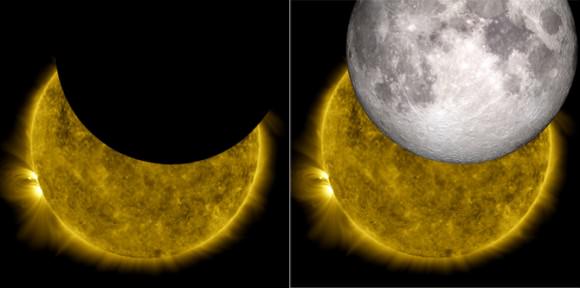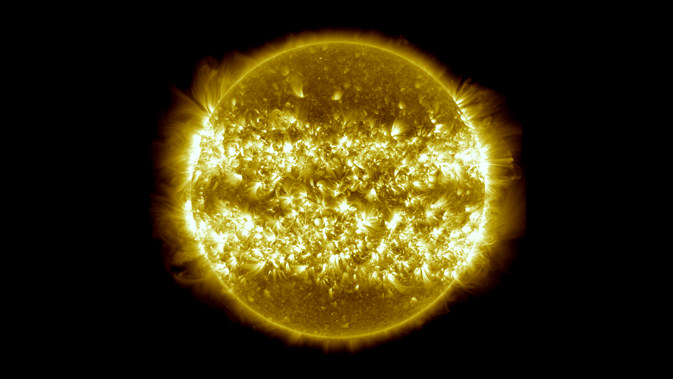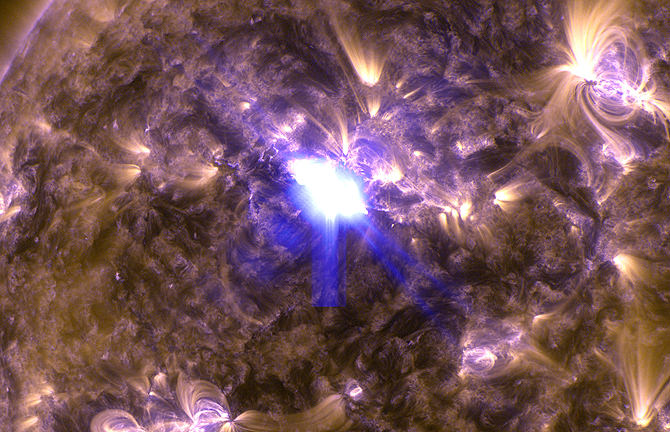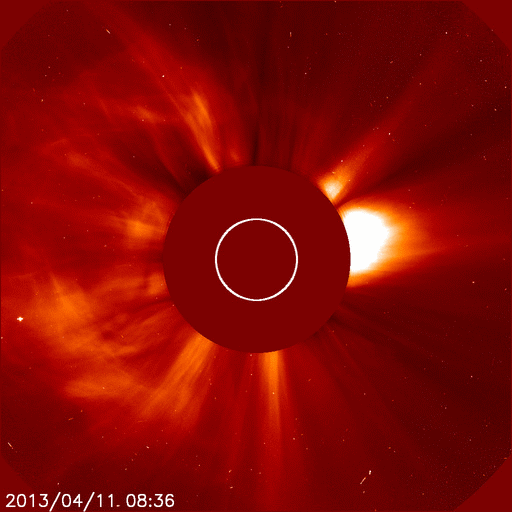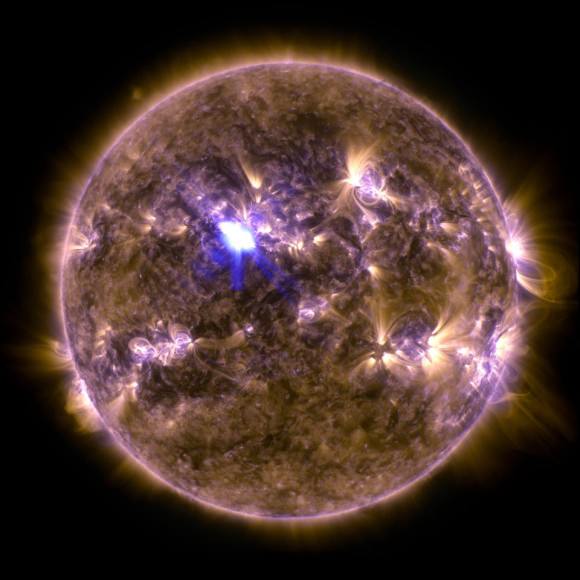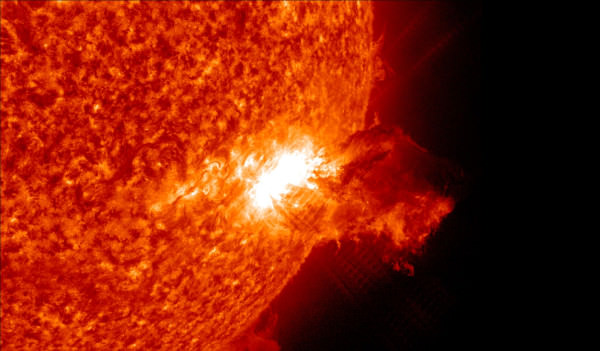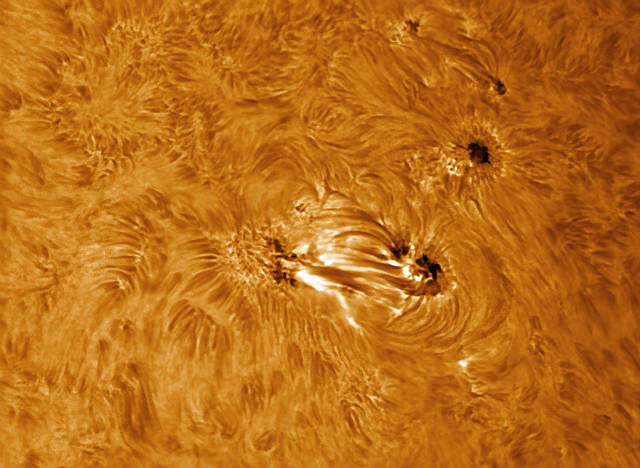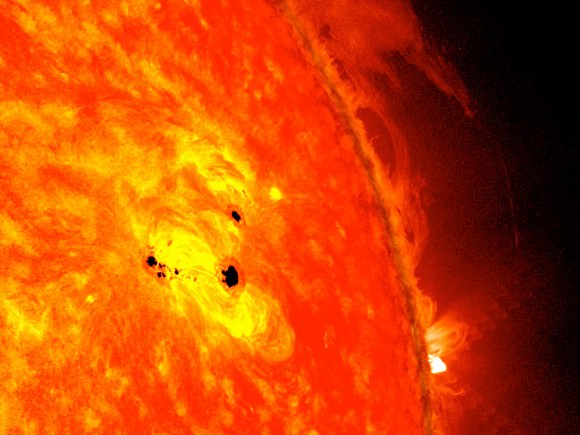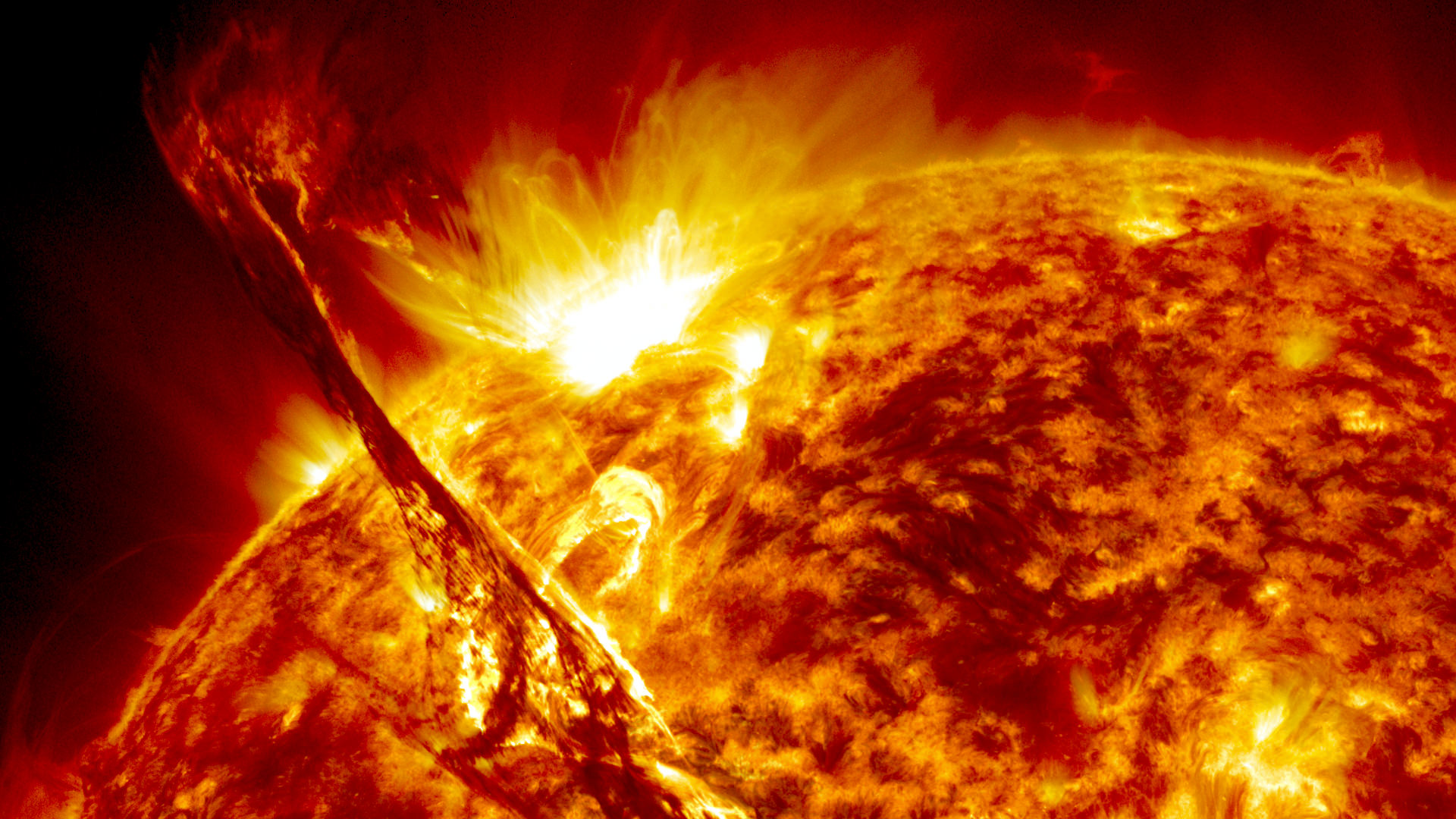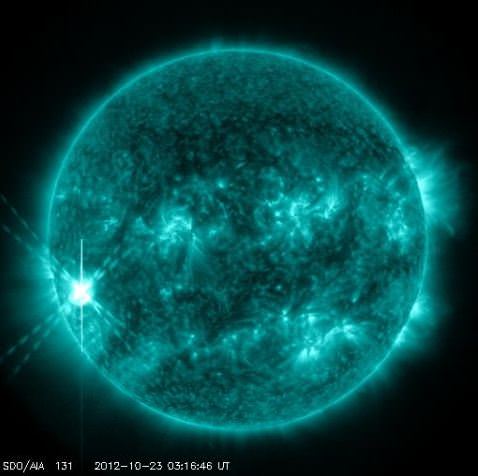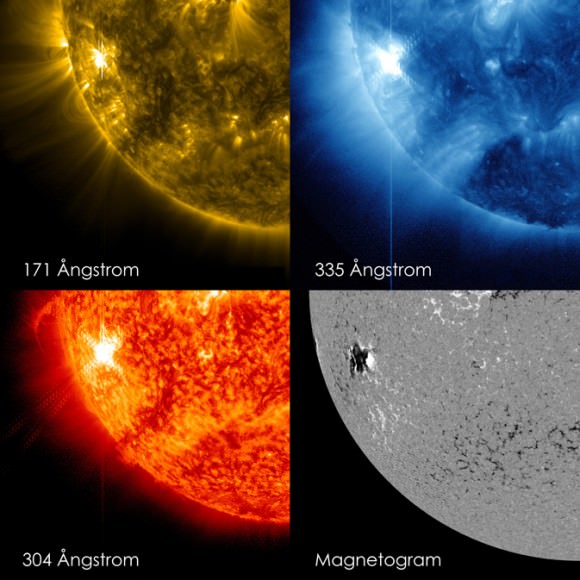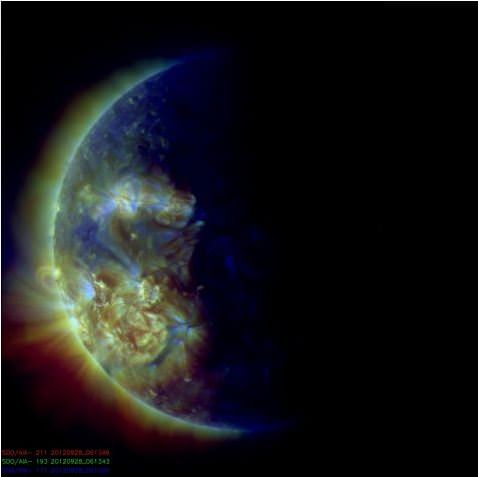You’ve probably never before seen an image like the one above. That’s because it is the first time something like this has ever been created, and it is only possible thanks to two fairly recent NASA missions, the Solar Dynamics Observatory and the Lunar Reconnaissance Orbiter. We’ve shared previously how two or three times a year, SDO goes through “eclipse season” where it observes the Moon traveling across the Sun, blocking its view.
Now, Scott Wiessinger and Ernie Wright from Goddard Space Flight Center’s Scientific Visualization Studio used SDO and LRO data to create a model of the Moon that exactly matches SDO’s perspective of a lunar transit from October 7, 2010. They had to precisely match up data from the correct time and viewpoint for the two separate spacecraft, and the end result is this breathtaking image of the Sun and the Moon.
“The results look pretty neat,” Wiessinger said via email, “and it’s a great example of everything working: SDO image header data, which contains the spacecraft’s position; our information about lunar libration, elevation maps of the lunar surface, etc. It all lines up very nicely.”
‘Nicely’ is an understatement. How about “freaking awesome!”
And of course, they didn’t just stop there.
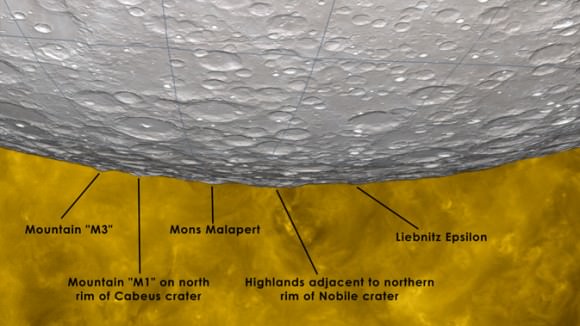
Since the data from both spacecraft are at such high resolution, if you zoom in to the LRO image, features of the Moon’s topography are visible, such as mountains and craters. This annotated image shows what all is visible on the Moon. And then there’s the wonderful and completely unique view in the background of SDO’s data of the Sun.
So while the imagery is awesome, this exercise also means that both missions are able to accurately provide images of what’s happening at any given moment in time.
Beautiful. See more imagery and info at this SVS page.
